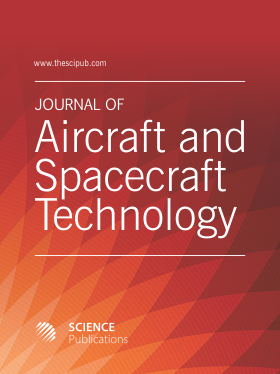Romanian Engineering "On the Wings of the Wind"
- 1 Bucharest Polytechnic University, Romania
- 2 Second University of Naples, Italy
Abstract
The presented study proposes a commemoration of the main artisans of the Romanian and world aviation, from its beginnings to the day. Very briefly are brought to the forefront, the main inventors of flying machines and equipment that have lived here in the Romanian territory and have contributed substantially to the development of any type of flight. We will talk about Traian Vuia, Aurel Vlaicu, Alexandru N. Ciurcu, Hermann Julius Oberth, Elie Carafoli, Anastase Dragomir, Radu Manicatide, Iosif Silimon, Elena Caragiani-Stoenescu, Petre Constantinescu, Dumitru Dorin Prunariu, Henri Marie Coanda, George (Gogu) Constantinescu. George (Gogu) Constantinescu (4.Oct.1881 - December 11, 1965) was a Romanian scientist and engineer, often considered to be one of the most important Romanian engineers. He was responsible for creating a new field of mechanics, called "sonicity," which describes the transmission of energy through vibrations in fluid or solid bodies. He applied the new theory to numerous inventions: sonic, sonic, sonic and others. Among other achievements, there is also a pulling device among the propeller blades regardless of its speed and the first automatic gearshift. He has actively participated in the construction of English aircraft, the Bristol type, while he lived in England. Henri Marie Coanda (June 7, 1886 - November 25, 1972) was an Academician and Romanian engineer, aviation pioneer, physicist, inventor, inventor of the reaction engine and discoverer of the effect that bears his name. Henri Coanda was born in Bucharest on June 7, 1886, being the second child of a large family (Henri had four brothers and two sisters, a total of seven children). His father was General Constantine Coanda, a former mathematics professor at the National School of Bridges and Highways in Bucharest and former Prime Minister of Romania for a short period of time in 1918. His mother, Aida Danet, was the daughter of French doctor Gustave Danet. Traian Vuia (August 17, 1872 - September 3, 1950) was a Romanian inventor and an aviation pioneer who designed, built and tested his own planes, which at the time were among the first heavier aircraft than the air. On March 18, 1906, he made his first self-propelled flight (without catapults or other exterior means) with a heavier device than the air. In his first flight he managed to float about 12 m (40 feet) at Montesson in France on March 18, 1906. This was the first "certified" flight with the take-off and landing of the aircraft (unassisted from the outside), made with a monoplane aircraft powered by a wheelchair. Performing a mechanical flight with a heavier machine than the air was a fascination at the end of the past and the beginning of our age. Thousands of fools tried to accomplish it, while the "balloons," who at the end of the eighteenth century had managed to rise in the balloons of the balloons, were smiling with superiority, convinced that the future is theirs, those with more aerial vehicles light than air.
DOI: https://doi.org/10.3844/jastsp.2018.1.18

- 4,901 Views
- 3,203 Downloads
- 0 Citations
Download
Keywords
- Romanian Engineering
- Social Sciences
- Modern Transportation
- Flight
- World Aviation
